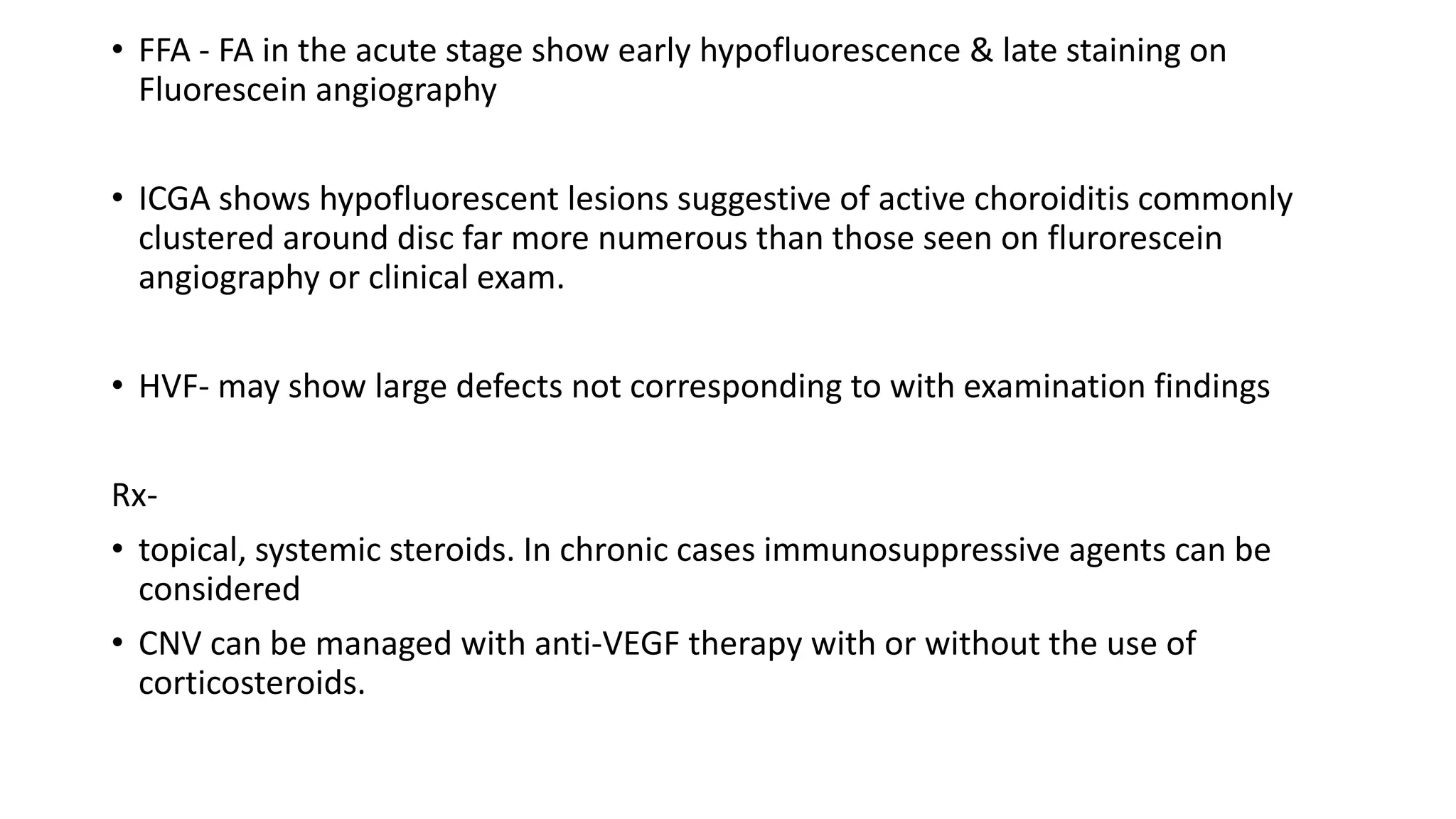The white dot syndromes are a group of diseases characterized by inflammation of the outer retina, retinal pigment epithelium, and choroid. They include birdshot retinochoroidopathy, multifocal choroiditis and panuveitis, punctate inner choroidopathy, subretinal fibrosis and uveitis syndrome, multiple evanescent white dot syndrome, acute posterior multifocal placoid pigment epitheliopathy, and serpiginous choroidopathy. The etiology is unknown but may be autoimmune or infectious. Patients typically present with blurred vision, photopsias, and floaters. Examinations reveal multiple cream-colored lesions throughout the fundus. Treatment involves corticosteroids and immunosuppress




































